Strawberries are relatively simple little plants. Their genomes have been completely mapped, and their life cycles are fully understood. But, as simple as strawberry plants may seem, they are still complex enough to warrant study; and, the study that goes into them continues to reveal much fascinating information.

This post is dedicated to that topic of plant fertilization that sometimes can induce somnambulism in all but the most ardent botanists: strawberry pollination. But, once you’ve reviewed this information, you’ll be ready to tackle hand pollination of strawberries or be better able to situate your strawberry bed in the most ideal location for growing gargantuan berries!
Jump to:
Strawberry Pollination: Background
There is quite a bit of confusion surrounding what strawberries can and can’t do when it comes to strawberry pollination. A bit of background information should help clear some of the muddled minds out there.
First of all, let’s note what the recent research shows: strawberry pollination is good for plants. Sure, I know that is the way the plants roll, but in our hi-tech society, more and more means of manipulating living organisms in order to boost yields and support the calls for bigger barns are churned out annually. Lost among the latest man-made development is often the simple fact that nature often does it best.
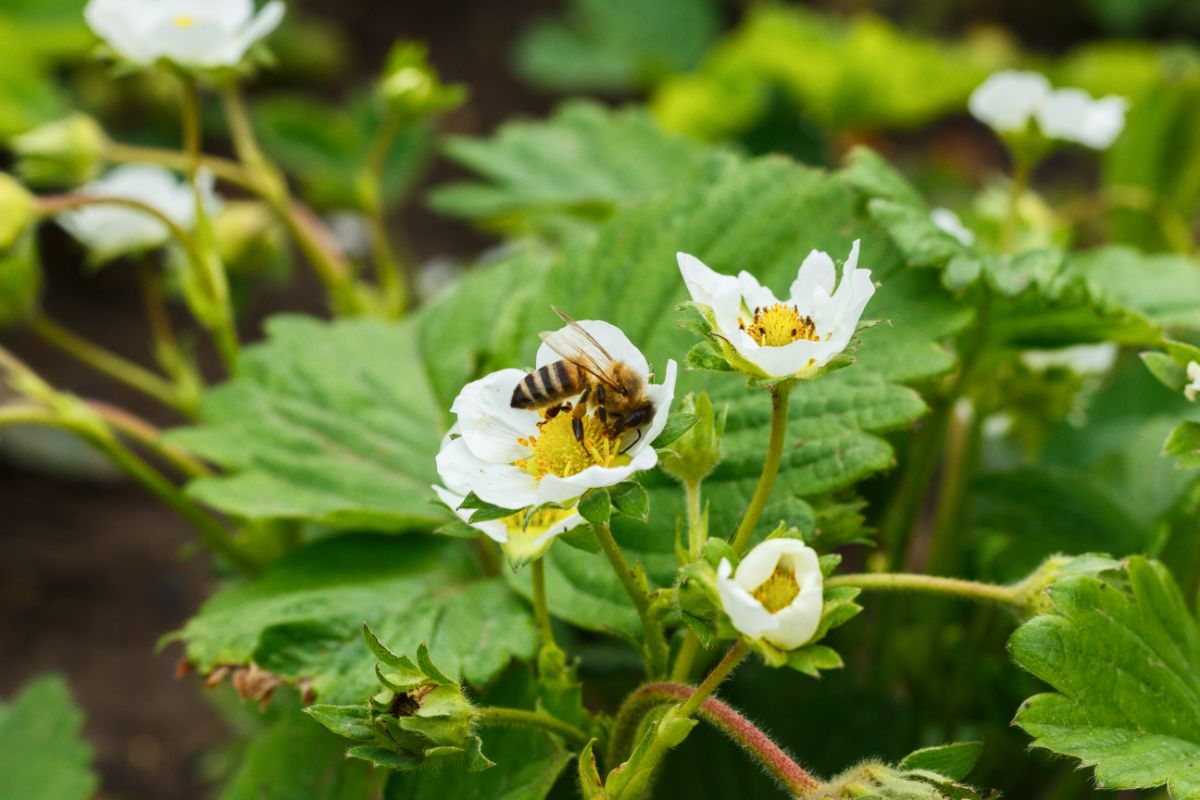
When it comes to strawberries, the largest, plumpest, most colorful strawberries are actually the ones that were trod upon heavily by 6-legged chitin-covered creatures when they existed in their flower stage. The more heavily pollinated a strawberry is, the bigger and better the berry becomes.
Secondly, strawberry plants produce flowers that are hermaphroditic. That means each strawberry flower contains both the male stamen and the female pistil. Pollen from the stamens at the outer edge of the flowers must make it the short distance to the pistils in the center for any fruit to set. If a strawberry plant is grown completely undisturbed in a hermetically sealed apparatus with no wind or other movement, pollen wouldn’t make it to the pistils, and there would be no strawberries.
Thirdly, however, is the fact that strawberry plants are frequently (and accurately) described as “self-fertile.” What that means is that if your strawberry plant has only one flower, pollen from the poor fellow will suffice to fertilize itself and form a berry, providing the pollen reaches the pistil.
How to Pollinate Strawberries
Remember, strawberry pollination is good. The more you have, the better your strawberry haul. Pollination makes larger and more numerous berries in virtually any strawberry bed. So, here is how to pollinate strawberries using three different methods.
1. Let the insects do the work for you.
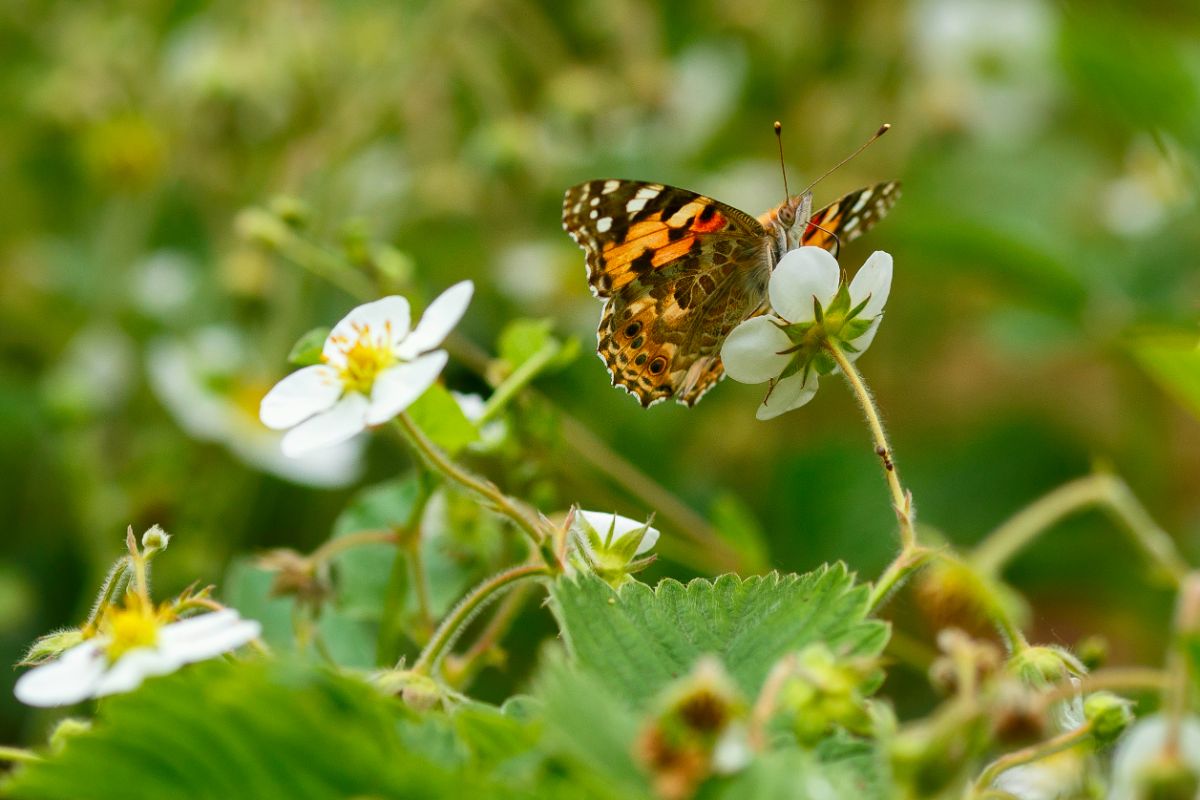
This is actually the best method of strawberry pollination. Insects, especially bees, will find and pollinate strawberry flowers quite effectively. Planting your strawberry patch where it will receive the most attention from the creepy-crawly-flying thingies is a great idea. Remember, the more pollination that occurs, the bigger your strawberries and your overall yield. What is fascinating is that insect diversity actually matters.
Domesticated honey bees will focus their fertilization on the top of the flower while wild species of bees typically fertilize more heavily around the base of the flower. Each fly or butterfly or beetle that comes sniffing around will also fertilize the strawberry (albeit less effectively) by spreading pollen around. In short, insect diversity matters. Do you want the biggest and best strawberries? Let the bugs flock forth to do their strawberry pollination.
2. Let the wind do it.
Even gentle breezes are sufficient to transfer the pollen a few millimeters from stamen to pistil. So, even in the absence of bugs (like a hydroponic setup or a bug-free window sill), strawberry pollination can still occur. However, wind or breezes often won’t do a great job. So, you will probably end up with fertilized strawberries (at least a few), but you might be disappointed with the overall haul.
3. You do it.
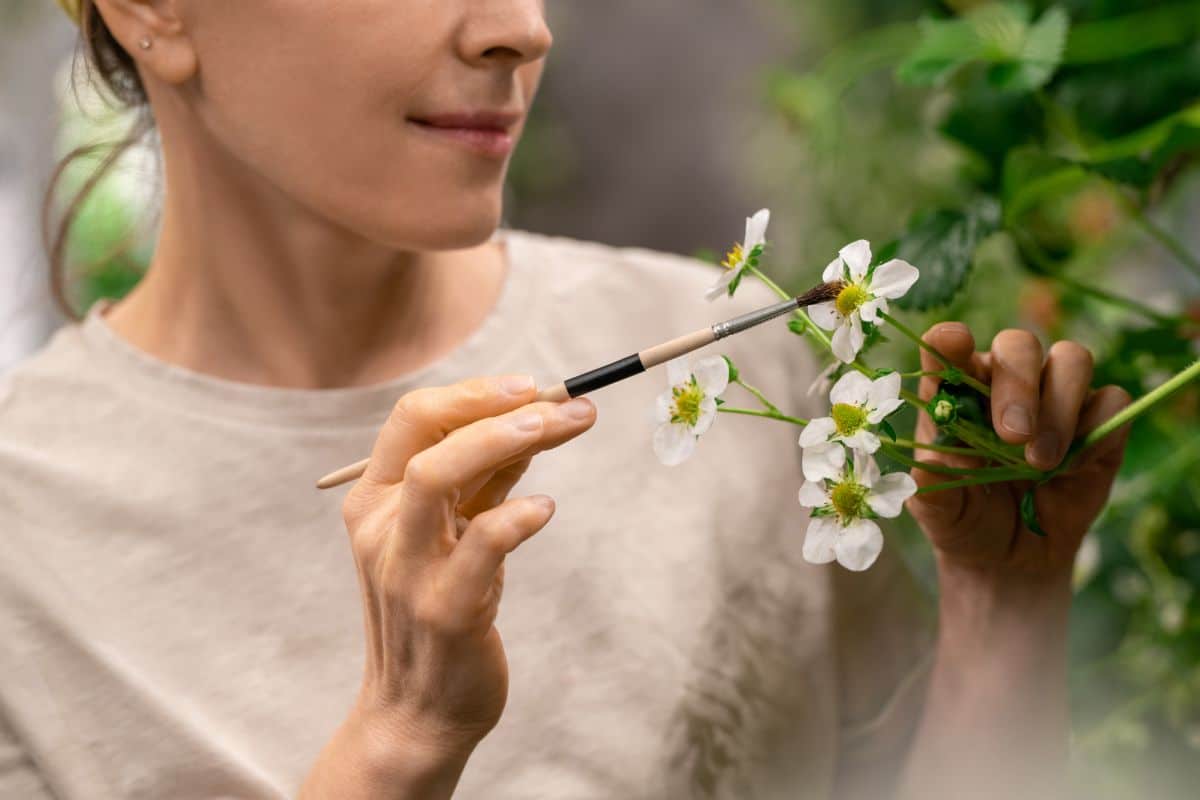
The tiny motes of pollen that can be found on the stamens of strawberry flowers are not picky. Being as small and light as they are, they are transferred around rather easily. Brushing the outer edge of the flover with your finger (gently!) to move pollen into the center of the flower is an easy and quick way to pollinate your strawberries.
More effective is using a fibrous or small-bristled utensil to brush/collect pollen from multiple flowers and “paint” them onto the pistils of multiple flowers. A makeup brush, fine-bristled paintbrush, or a q-tip that has the cotton teased out on one end all will work.
Benefits of Strawberry Pollination
1. Heavy pollination increases the overall yield of strawberry plants.
2. Cross-pollination leads to decreased deformations and an overall higher-quality aesthetic.
3. Cross-pollination results in larger overall strawberries than self-pollination or same-variety pollination. Remember, insect diversity also matters. Get as many good bugs to visit your plants as possible!
4. Natural strawberry pollination increases commercial viability also. Bee pollination results in brighter and redder berries, which are more pleasing to customers. Natural pollination also improves quality by reducing spoilage. To quantify, studies show that bee pollination results in 39% greater value than wind pollination and a whopping 54% greater value than self-pollination.
How Does Pollinating Strawberries Make Them Better?
While it is observable and repeatable that strawberry pollination improves strawberry harvests (as well as affects other fruits by increasing firmness (in melons and cucumbers) and sugar content (in a few other fruits)), the science behind it isn’t fully understood as of yet.
The most likely explanation for the dramatic beneficial effect that pollination of strawberries has is that it stimulates two major plant hormones, auxin, and gibberellic acid. Gibberellic acid provides increased shelf-life by delaying softening of the accessory flesh of the strawberries (the red part). This assists berry longevity by reducing the bruising that strawberries so frequently suffer and diminishing susceptibility to mold. Auxin, on the other hand, increases cell division and growth. The result of auxin stimulation is increased weight and firmness of the fruit.
As to the reasons why pollination of strawberries affects their color, your guess is as good as anyone else’s for the time being. The processes that are involved in the upregulation of the bioflavonoids that give strawberries their signature hue are unknown at present. It does make a sort of sense, however, that the prettiest fruits attract more animals that better disperse the seeds after consumption.
I’d have to admit that I’d go for the biggest, brightest strawberries first myself! Hooray for strawberry pollination!

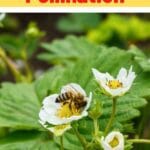
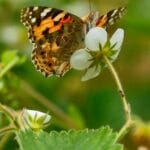
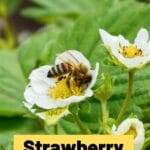
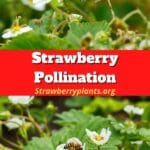
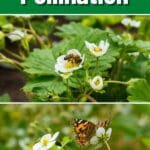

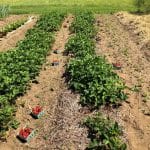
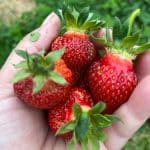
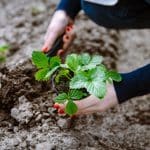
Scott Rifkin
Crop failure.
Hello
I grew 50 plants each of 6 varieties this year in raised beds with great soil tests. Started with plugs planted in September. Mulched over winter with straw. T-tube irrigation daily from may 1. No fertilizer used.
Plants grew lushly but few flowers and few strawberries. In past years this method yielded well.
We did have a couple 92 degree days in mid May. I live in central Maryland.
Any idea why the production was poor?
Thanks Scott Rifkin
David Davis
Not enough phospate or potassium in the soil is the only thing I can think of
Cathy
After I read about pollination, I used a sturdy crow feather in the greenhouse to pollinate the flowers , It seemed to work very well, with the light tips on the feather, I did not have to worry about a light touch. I love this web site and refer to it often, still make my mistakes though.
alex
Hi Mr. Strawberry,
Excellent and very informative information. Thank you for sharing your knowledge.
Regards
alex
Most. Marufa Khatun
Good day
I’m in Bangladesh and we are trying to develop hybrid and crossing is on going. But we are in difficulty for crossing time. My query is which time is the best for strawberry cross pollination? I would like to mention that, we preserved pollen for pollination.
NORMAN CARKERY
how do I grow and pollinate strawberry plants in a tunnel successfully
Jen
Hello,
My plants from last year started growing again in March and gave a small batch of delicious, sweet berries in May. I did notice though, that there were little white mushrooms that were growing around the roots; I removed them whenever they came in, and all the plants still seemed healthy. Most of the flowers have been pollinated, and there are lots of berries on my plants and is growing very well, but the berries won’t ripen, and I believe it’s got some sort of fungal infection. All the berries have a whitish fuzz on parts of the fruit, and the stems have a white fuzz on them. We ate the few that ripened, but didn’t taste very good. We have had a very dry and hot spring, and an unusually wet and cold July. Could this be the reason for a possible fungal infection? If that’s what they have, how can I make them better pls?
Thank you!!
Candi Harrison
Hello. i started my strawberry plant in a container and then transfered it into on of my hanging bags outside on my patio. now my leaves are turning brown. what does this mean?
Steve
Can I mix June bearing, day neutrals, and everbearing in the same patch? Will cross pollination adversely affect any of the varieties or will they stay true?
IHANN
Good day Mr strawberry. I am from South Africa. Can I have some advice please? I am thinking of doing strawberries in hydroponics in an enclosed building. temperatures in the building is not very high. There will be growing lights in the building. I am thinking of using “fortlaramie”, “tristar” Ozarkbeauty” and Quinault” variety. Can I cross pollinate the varieties with each other and can this be grown in a hydroponic system?
Thannk you for all your advice
Mr. Strawberry
IHANN,
For hydroponic systems, the day-neutral varieties are indeed the best. Tristar and Tribute are two of the most popular. However, cross pollinating them will not give true-to-variety cultivars and should probably be avoided. Good luck!
Alex
Hi,
Did you managed ti get a response on your question? Let me know please. Maybe I can help. I am from South Africa too.
Regards
Alex
Patrice
I have indoor strawberry that I pollinate with a paint brush. I try to pollinate each flowers once a day to increase my chances to get strawberry. In your article you say the more the better when it comes to pollination. How often would you say is good?
Mr. Strawberry
Patrice,
The more varieties of pollen you can cross pollinate with, the better. After a day or two of hand-pollinating, they should be sufficiently pollinated. Good luck!
Hadi
Dear Mr. Strawberry
I was wondering if you could help me. I have a strawberry greenhouse and I am Faced with problems during pollination period. More then of 70% of flowers have no petals( or much smaller petals than the carpel). How could I send you some pictures of the flowers?
Could I ask you give me some information for solving the problem?
Beat regards,
Hadi
Mr. Strawberry
Hadi,
Do you live in a temperate region? If so, do insects have access to the plants? If the flowers are properly fertilized and you have a good harvest, I wouldn’t worry about the appearance of the petals. If you don’t, I’d recommend having your soil tested for deficiencies. Good luck!
Sarah
How can I pollinate strawberry flowers by hand PROPERLY? I tried the method to hand pollinate them but it didn’t work. Do I need to pollinate the flowers by transferring pollen into other flowers or what?
Mr. Strawberry
Sarah,
You can get a very fine artist’s paintbrush (very fine bristles) and gently “paint” all the flowers. The pollen from one will stick to the bristles and be transferred to the others as you brush them, similarly to how bees do it. Good luck!
Jerry Schauffler
If I need to use row covers to prevent pests from eating my berries, how often and for how long do I need to remove them to allow enough insect activity?
Mr. Strawberry
Jerry Schauffler,
If you have June-bearing strawberries, I’d recommend keeping them uncovered until the first berries start to ripen and then covering them. The pollination on the later berries won’t be as good, but you will probably maximize your harvest that way if you have a traditionally bad pest problem. You might also want to try leaving them uncovered and liberally applying diatomaceous earth. Some success might be had that way as well. Good luck!
Jeena
Planted about 10 plants last year that grew like crazy and produced quarts of strawberries all summer long. They also sent out runners all over, so now there are many more plants. They made it through the winter and produced early this spring but not big, beautiful strawberries like last year. Since that early amount,they have done little to nothing. Last yr we had a plum tree next to the berries that brought bees all season long. We took it out because it was a terrible plum that nobody liked. Could our problems be related to the almost total lack of bees around the berry patch?
Mr. Strawberry
Jeena,
Yes, it is possible since good pollination does help increase berry size. More probably, however, your plants are overcrowded. I’d try thinning them to no more than 3 per square foot and see if that makes a big difference for next spring. Good luck!